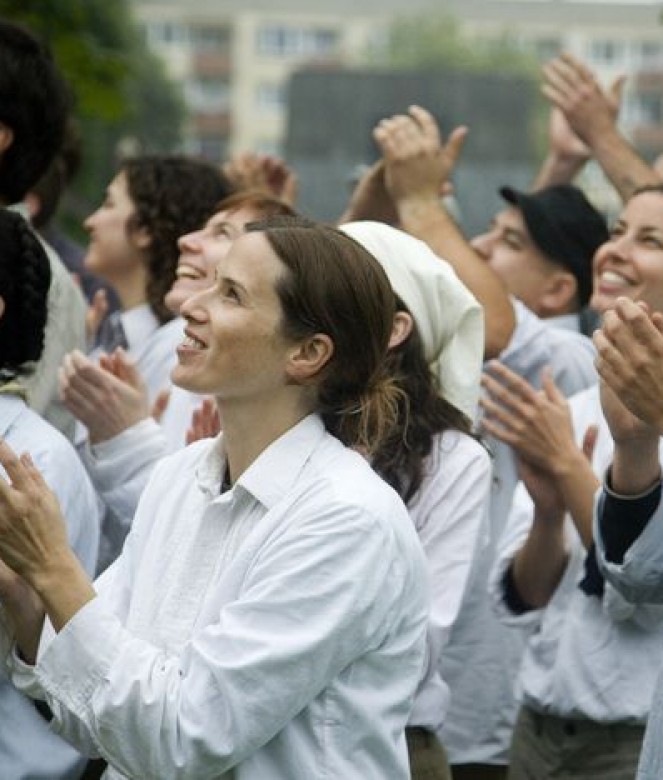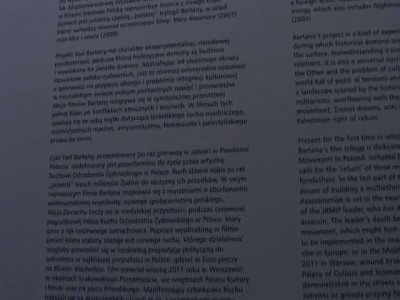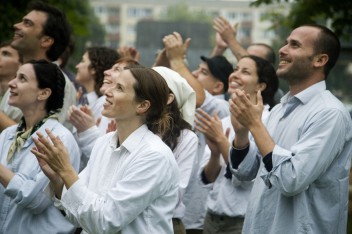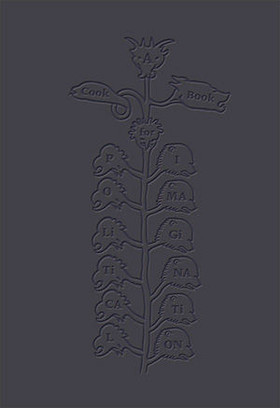54th International Art Exhibition — la Biennale di Venezia Yael Bartana … and Europe will be stunned
04.06 – 27.11.2011 54th International Art Exhibition — la Biennale di Venezia Yael Bartana … and Europe will be stunned
Polish Pavilion at the International Art Exhibition – La Biennale di Venezia
commissioner of the Polish Pavilion: Hanna Wróblewska
curators: Sebastian Cichocki, Galit Eilat
commissioner assistant: Joanna Waśko
exhibition design: Oren Sagiv
graphic design: Guy Saggee (studio Shual)
organizer: Zachęta National Gallery of Art
Polish Pavilion at the 54th Exhibition in Venice
La Biennale di Venezia ILLUMInations
Giardi di Castello, Venice
The exhibition … and Europe will be stunned will be the official Polish participation at the 54th International Art Exhibition in Venice in 2011. This video installation by the Israeli-born artist Yael Bartana will be the first time a non-Polish national has represented Poland in the history of the Venice Biennale. Bartana’s three films Mary Koszmary (2007), Mur i wieża (2009) and Lit de Parade (2011) revolve around the activities of the Jewish Renaissance Movement in Poland (JRMiP), a political group that calls for the return of 3,300,000 Jews to the land of their forefathers. The films traverse a landscape scarred by the histories of competing nationalisms and militarisms, overflowing with the narratives of the Israeli settlement movement, Zionist dreams, anti-Semitism, the Holocaust and the Palestinian right of return.
Mary Koszmary (Nightmare) is the first film in the trilogy and explores
a complicated set of social and political relationships among Jews, Poles and other Europeans in the age of globalisation. A young leftist activist, played here by Sławomir Sierakowski (founder and chief editor of Krytyka Polityczna magazine), delivers a speech in the abandoned National Stadium in Warsaw. He urges three million Jews to come back to Poland. Using the structure and sensibility of a World War II propaganda film, Mary Koszmary addresses contemporary anti-Semitism and xenophobia in Poland, the longing for the Jewish past among liberal Polish intellectuals, the desires of a new generation of Poles to be fully accepted as Europeans and the Zionist dream of return to Israel.
As Yael Bartana says:
This is a very universal story; as in previous works, I have treated Israel as a sort of a social laboratory, always looking at it from the outside. These are mechanisms and situations which can be observed anywhere in the world. My recent works are not just stories about two nations — Poles and Jews. This is a universal presentation of the impossibility of living together.
The second film in the trilogy Mur i wieża (Wall and Tower) was made in the Warsaw district of Muranów, where a new kibbutz was erected at actual scale and in the architectural style of the 1930’s. This kibbutz, constructed in the centre of Warsaw, was an utterly ‘exotic’ structure, even despite its perverse reflection of the history of the location, which had been a part of the Warsaw Ghetto. The film invokes previous heroic images of strong and beautiful men and women who mythically established Israel. They were depicted as determined pioneers who, despite the most unfavourable conditions, kept building houses, cultivating land, studying, bringing up children collectively, sharing their assets and constantly training to fight off potential enemy attacks. This is the world that the artist proposes to resurrect in the 21st century, in an entirely different political and geographical configuration.
Bartana again:
I quote the past, the time of Socialist utopia, youthfulness and optimism — when there was a project of constructing a modernist idea of a new world.
In the new film Lit de Parade, the final part of the trilogy, Bartana brings the notion of national identity, representation and participation to the ultimate test. The plot evaporates all borders between truth and illusion, reality and fiction and calls for a confrontation with our own self understanding of the definitions and perspectives of contemporary culture and society. It leads the viewer into a state of uncertainty about whether the Jewish Renaissance Movement in Poland is pure hallucination, an artistic project, or rather a concrete and constructive possibility for the near future of Poland, Europe and the Middle East.
The whole trilogy of films can also be read in a broader context. Apart from the complex Polish-Jewish relationship, it is an experimental form of collective psychotherapy through which national demons are stirred and dragged into consciousness. This is a story about our readiness to accept the other and of assimilation in an unstable world where geography and politics are subject to radical shifts. Bartana tests reactions to the unexpected return of the ‘long unseen neighbour’ and recalls the forgotten motif of alternative locations for the state of Israel that were once considered by Zionists, such as Uganda. Bartana: ‘I wanted to be provocative and concentrated — and send a simple message. It stemmed from my being confused about the relationship between my own art and politics. I am critical of the state of Israel, but at the same time there is this feeling of pain and disappointment resulting from unkept promises.’
The films are screened inside a complex exhibition design (architect: Oren Sagiv), that will fill the whole interior of the Polish Pavilion. The built volumes inside will evoke associations with a settlement or outpost.
The publication A Cookbook for Political Imagination will be produced to accompany the exhibition. This is not a traditional exhibition catalogue but a manual of political instructions and recipes, covering a broad spectrum of themes and written by multiple authors. It ranges from constitutions to legal solutions, architectural plans to elements of visual identity, food recipes, social advice and guidance for members of the movement.
The meeting of the jury of the competition for the project for an exhibition in the Polish Pavilion at the 54th International Art Biennale, took place in Zachęta National Gallery of Art on 14th December, 2010.
The Jury was composed of: Bożena Czubak, Bartłomiej Gutowski, Donata Jaworska, Joanna Kiliszek, Katarzyna Kozyra, Anda Rottenberg, Karol Sienkiewicz, Stach Szabłowski, Monika Szewczyk, Adam Szymczyk, Agnieszka Tarasiuk and Hanna Wróblewska.
The Jury’s statement in relation to the outcome of the competition:
After heated discussion, the Jury of the competition for the project for an exhibition in the Polish Pavilion at the 54th International Art in Venice has chosen the project of an Israeli artist Yael Bartana titled "...And Europe Will Be Stunned/ ...i zadziwi się Europa". The curators of the project are Sebastian Cichocki and Galit Eilat. In the Polonia Paviliona a film trilogy will be presented, of which two movies have already been made: "Mary koszmary" in 2007 and "Mur i wieża" in 2009. The closing element of the cycle will be a new movie entitled "...And Europe Will Be Stunned/...i zadziwi się Europa". Its premiere will take place during at the 54th International Art in Venice. The Israeli artist has been realising her project in Poland for some years, in dialogue and cooperation with Polish institutions and activists. However, Bartana's trilogy goes beyond the format of national art. Her project stimulates the political imagination, confronting us with the impossible–an alternative version of history and unreal political projects. The movies open up a multi-threaded discussion about the Zionism, Polish antisemitism, Israeli colonialism and the myths and phantasms that are in the background.
On 17th December 2010, the Minister of Culture and National Heritage,¬ Mr. Bogdan Zdrojewski, accepted the competition result.
54th International Art Exhibition — la Biennale di Venezia
Yael Bartana … and Europe will be stunned
04.06 – 27.11.2011
Polish Pavilion at the International Art Exhibition – La Biennale di Venezia
Giardini della Biennale, Venice, Italy
See on the map
Polish participation in the 54th International Art Exhibition in Venice was made possible through the financial support of the Ministry of Culture and National Heritage of the Republic of Poland.
The exhibition is organized in cooperation with the Adam Mickiewicz Insitute, The Society for the Encouragement of Fine Arts, Mondriaan Foundation



